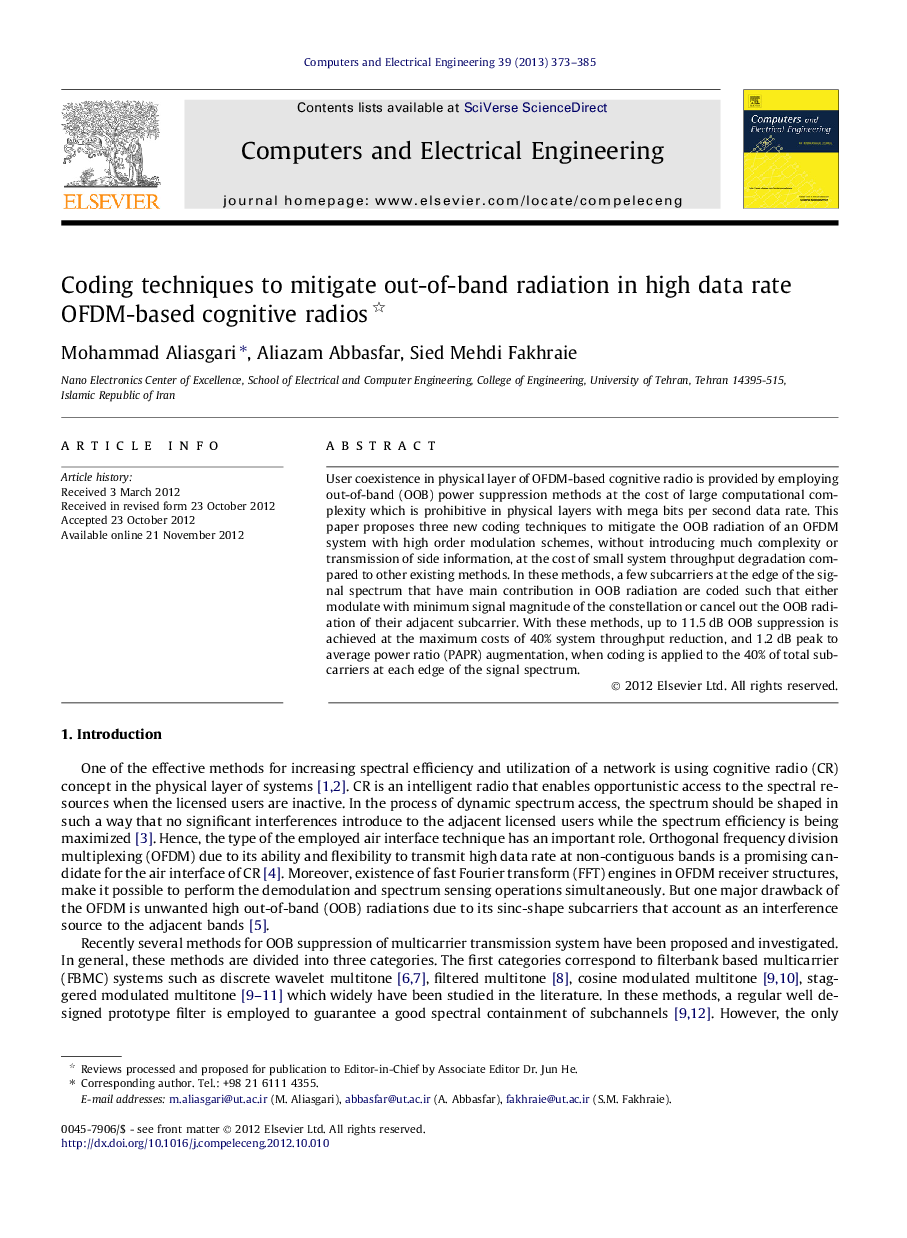| Article ID | Journal | Published Year | Pages | File Type |
|---|---|---|---|---|
| 455046 | Computers & Electrical Engineering | 2013 | 13 Pages |
User coexistence in physical layer of OFDM-based cognitive radio is provided by employing out-of-band (OOB) power suppression methods at the cost of large computational complexity which is prohibitive in physical layers with mega bits per second data rate. This paper proposes three new coding techniques to mitigate the OOB radiation of an OFDM system with high order modulation schemes, without introducing much complexity or transmission of side information, at the cost of small system throughput degradation compared to other existing methods. In these methods, a few subcarriers at the edge of the signal spectrum that have main contribution in OOB radiation are coded such that either modulate with minimum signal magnitude of the constellation or cancel out the OOB radiation of their adjacent subcarrier. With these methods, up to 11.5 dB OOB suppression is achieved at the maximum costs of 40% system throughput reduction, and 1.2 dB peak to average power ratio (PAPR) augmentation, when coding is applied to the 40% of total subcarriers at each edge of the signal spectrum.
Graphical abstractFigure optionsDownload full-size imageDownload as PowerPoint slideHighlights► We suppress out of band (OOB) radiation of an OFDM system by new coding schemes. ► We suppose that the OFDM system employs high order modulation schemes. ► The coding is applied to side-subcarriers which have main contribution in OOB power. ► A considerable suppression is achieved at the cost of just small throughput loss. ► The coding schemes do not introduce any explicit computational complexity.
